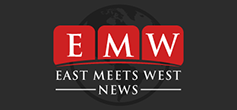FSA Holdings Second Quarter 2008 Results
2008-08-06 10:40:00
FSA Holdings Second Quarter 2008 Results
U.S. Municipal Business Drives Record First-Half Originations
Reserve Increases and Impairment in FP Investment Portfolio Lead to
Net Loss of $331 Million
FSA EXITS ABS BUSINESS TO COMMIT FULL RESOURCES TO PUBLIC FINANCE
PARENT DEXIA INJECTS $300 MILLION IN THE COMPANY AND TAKES
RESPONSIBILITY FOR LIQUIDITY AND CREDIT RISK OF FINANCIAL PRODUCTS
BUSINESS
NEW YORK–(EMWNews)–Financial Security Assurance Holdings Ltd. (the Company), a member of
the Dexia group and the holding company for Triple-A bond insurer
Financial Security Assurance Inc. (FSA), announced net losses of $330.5
million for the second quarter of 2008 and $752.1 million for the first
half, due primarily to other-than-temporary impairment (OTTI) charges
related to the Financial Products (FP) Investment Portfolio and loss
expenses related to financial guarantees of second-lien residential
mortgage-backed securities (RMBS).
Robert P. Cochran, chairman and chief executive officer of FSA, said: “While
we are disappointed to report these losses, FSA’s
underlying business fundamentals remained strong in the first half of
2008 with record present value (PV) originations of $591.2 million,
primarily driven by originations in the U.S. municipal finance market,
and significant growth in earned premiums and credit derivative fees, as
well as investment income. At the same time, we dramatically decreased
our operating expense.”
On a comparable half-year basis, earned premiums and realized gains on
credit derivatives (fees for insuring credit derivatives, formerly
included in earned premiums) grew 18.1% to $207.1 million, excluding
refundings, and investment income increased by 14.2% to $132.2 million.
FSA’s operating expenses decreased $34.1
million in the first half, a 36.4% decrease from the comparable period
in 2007.
Strategic Review
In light of the credit deterioration in the residential mortgage-backed
portfolio and general economic conditions, FSA and Dexia undertook a
strategic business review during the second quarter, which has resulted
in a decision to exit the asset-backed business in order to devote full
resources to the global public finance sector.
“Comparing the significant volatility observed
in the ABS/RMBS markets against the broad and deep opportunities in the
lower risk public finance markets, we have concluded that we can create
greater value for issuers, investors and our shareholder by focusing
solely on public finance activities. The public sector’s
challenge of meeting the enormous needs for new public infrastructure
and replacement of aging projects throughout the world in the current
period of economic stress makes insured executions more cost-efficient
for issuers and more attractive to a broader group of investors,”
Mr. Cochran said.
Increased Loss Provisions for Insured RMBS
In the second quarter, FSA increased reserves primarily for estimated
losses on insured home equity line of credit (HELOC) and ALT-A
closed-end second-lien (CES) transactions and established a reserve for
three Option ARM insured transactions.
Commenting on the projected losses, Mr. Cochran said: “We
have increased loss provisions considerably to reflect the more severe
assumption that economic stress in the U.S. economy will continue at a
high level until the middle of 2009 and not return to normal until late
2010. Importantly, the increase in reserves between the first and second
quarters is principally due to revising our expectations about when
asset performance will recover rather than changes in the recent
performance of these transactions. As the loss potential of this
economic cycle develops over the next 12 to 18 months, the uncertainty
around reserves should reduce dramatically, and, at the same time, our
asset-backed and residential mortgage-backed exposure, which has a
remaining average life of approximately 3.5 years, will be running off
rapidly. This run-off should generate in excess of $700 million of
earned revenue and should release substantial capital as risk expires.”
Strengthening FSA’s Capital Position
Dexia has injected $300 million in the Company and will take
responsibility for the liquidity and credit risk of the Financial
Products business, which primarily issues guaranteed investment
contracts (GICs). Additionally, the Company will reduce the size of the
FP business line to rely on municipal funding only.
“The combination of these initiatives is
expected to reduce FSA’s future financial
statement volatility, and increase the capital and claims-paying
resources dedicated to our public finance business,”
Mr. Cochran said.
With these measures in place, FSA exceeds the Triple-A capital
requirements for all three rating agencies, and the Company will
continue to work closely with each of them to address the qualitative
and systemic issues raised in recent reports.
Financial Highlights
Non-GAAP operating earnings, which exclude fair-value adjustments
management considers to be non-economic, were negative $502.7 million
for the second quarter of 2008, compared with positive $102.4 million
for the second quarter of 2007, and negative $601.7 million for the
first half of 2008, compared with positive $197.4 million for the first
half of 2007. The decline in operating earnings was driven primarily by
increased estimated losses on insured RMBS transactions, economic OTTI
charges in the FP Investment Portfolio, an OTTI charge for the
write-down of the Company’s investment in XL
Financial Assurance Ltd. (XLFA) and credit impairment losses in its
insured credit derivative portfolio.
The table below reconciles net income to operating earnings.
|
NET INCOME (LOSS) AND RECONCILIATION TO |
||||||||||||||||
|
NON-GAAP OPERATING EARNINGS (LOSSES) (1) |
||||||||||||||||
|
(in millions) |
||||||||||||||||
|
|
||||||||||||||||
|
|
Three Months Ended |
|
Six Months Ended |
|||||||||||||
|
June 30, |
June 30, |
|||||||||||||||
|
2008 |
|
2007 |
2008 |
|
2007 |
|||||||||||
|
Net income (loss) |
$ |
(330.5 |
) |
$ |
62.8 |
$ |
(752.1 |
) |
$ |
148.0 |
||||||
|
Less after-tax non-economic adjustments: |
||||||||||||||||
|
Fair-value adjustments for instruments with economically hedged risks |
(35.3 |
) |
(7.2 |
) |
(94.3 |
) |
(7.2 |
) |
||||||||
|
Fair-value adjustments for credit derivatives in insured portfolio |
184.1 |
(29.6 |
) |
(133.8 |
) |
(38.2 |
) |
|||||||||
|
Fair-value adjustments attributable to the Company’s own credit risk |
500.3 |
– |
551.9 |
– |
||||||||||||
|
Fair-value adjustments attributable to impairment charges |
|
(471.9 |
) |
|
– |
|
|
(471.9 |
) |
|
– |
|
||||
|
Subtotal |
(507.7 |
) |
99.6 |
(604.0 |
) |
193.4 |
||||||||||
|
IFRS adjustments |
|
5.0 |
|
|
2.8 |
|
|
2.3 |
|
|
4.0 |
|
||||
|
Operating earnings (losses) |
$ |
(502.7 |
) |
$ |
102.4 |
$ |
(601.7 |
) |
$ |
197.4 |
||||||
|
|
||||||||||||||||
|
[1] See “Non-GAAP Measures” below for a discussion of measures not promulgated in accordance with accounting principles generally accepted in the United States of America (U.S. GAAP). |
||||||||||||||||
The table below highlights the noteworthy items included in both net
income and operating earnings.
|
NOTEWORTHY ITEMS IN NET INCOME (LOSS)
AND OPERATING EARNINGS (LOSSES)
(in millions) |
||||||||||||||||
|
|
||||||||||||||||
|
Three Months Ended
June 30, |
||||||||||||||||
|
2008 |
|
2007 |
||||||||||||||
|
After-tax: |
Net Income (Loss) |
|
Operating Earnings (Losses) |
Net Income (Loss) |
|
Operating Earnings (Losses) |
||||||||||
|
Realized gains (losses) [1] |
$ |
25.1 |
$ |
25.1 |
$ |
(1.2 |
) |
$ |
(1.2 |
) |
||||||
|
OTTI on XLFA investment |
|
(24.7 |
) |
|
(24.7 |
) |
|
–– |
|
–– |
||||||
|
Net realized gains (losses) |
0.4 |
0.4 |
(1.2 |
) |
(1.2 |
) |
||||||||||
|
Losses and loss adjustment expenses |
(391.9 |
) |
(391.9 |
) |
(3.0 |
) |
(3.0 |
) |
||||||||
|
Fair-value adjustments for instruments with economically hedged risks in FP segment |
(35.3 |
) |
–– |
(7.2 |
) |
–– |
||||||||||
|
Fair-value adjustments for credit derivatives in insured portfolio |
140.0 |
(44.1 |
) |
(29.6 |
) |
–– |
||||||||||
|
Fair-value adjustments on FP segment liabilities attributable to the Company’s own credit risk |
476.3 |
–– |
–– |
–– |
||||||||||||
|
Fair-value adjustments on committed preferred trust attributable to the Company’s own credit risk |
24.0 |
–– |
–– |
–– |
||||||||||||
|
OTTI in FP investment portfolio |
(677.6 |
) |
(205.7 |
) |
–– |
–– |
||||||||||
|
|
Six Months Ended
June 30, |
|||||||||||||||
|
2008 |
|
2007 |
||||||||||||||
|
After-tax: |
Net Income (Loss) |
|
Operating Earnings (Losses) |
Net Income (Loss) |
|
Operating Earnings (Losses) |
||||||||||
|
Realized gains (losses) [1] |
$ |
25.2 |
$ |
25.2 |
$ |
(1.1 |
) |
$ |
(1.1 |
) |
||||||
|
OTTI on XLFA investment |
|
(24.7 |
) |
|
(24.7 |
) |
|
–– |
|
–– |
||||||
|
Net realized gains (losses) |
0.5 |
0.5 |
(1.1 |
) |
(1.1 |
) |
||||||||||
|
Losses and loss adjustment expenses |
(587.2 |
) |
(587.2 |
) |
(5.9 |
) |
(5.9 |
) |
||||||||
|
Fair-value adjustments for instruments with economically hedged risks in the FP segment |
(94.3 |
) |
–– |
(7.2 |
) |
–– |
||||||||||
|
Fair-value adjustments for credit derivatives in insured portfolio |
(177.9 |
) |
(44.1 |
) |
(38.2 |
) |
–– |
|||||||||
|
Fair-value adjustments on FP segment liabilities attributable to the Company’s own credit risk |
495.9 |
–– |
–– |
–– |
||||||||||||
|
Fair-value adjustments on committed preferred trust attributable to the Company’s own credit risk |
56.0 |
–– |
–– |
–– |
||||||||||||
|
OTTI in FP investment portfolio |
(677.6 |
) |
(205.7 |
) |
–– |
–– |
||||||||||
|
|
||||||||||||||||
|
[1] Includes realized gain (losses) from the General Investment Portfolio and the portfolio of assets acquired in refinancing transactions. |
||||||||||||||||
The primary driver of negative financial guaranty results in the second
quarter was additions to reserves on RMBS, including HELOC, Alt-A
closed-end second-lien (Alt-A CES) and option adjustable rate mortgage
(Option ARM) exposures, and, to a lesser extent, public finance
transactions. At June 30, 2008, the Company had net case reserves on ten
HELOC, five Alt-A CES and three Option ARM transactions totaling $728.6
million pre-tax, as a result of having increased the ultimate net loss
estimates on these RMBS insured transactions to $983.3 million pre-tax.
Loss and loss adjustment expenses totaled $602.9 million pre-tax for the
second quarter and $903.3 million pre-tax for the first half, driven
primarily by increases in these RMBS reserves and a $52.1 million
pre-tax loss incurred on public finance transactions in the second
quarter.
The Company estimated $44.1 million of after-tax credit impairment
losses (estimated economic losses) on two credit default swap (CDS)
transactions. The portion of the CDS fair-value adjustments attributable
to estimated economic loss is included in operating earnings, while the
portion of the fair-value adjustments expected to sum to zero over the
lives of the insured transactions is excluded from operating earnings.
The adverse FP results were due primarily to OTTI charges on certain
RMBS securities in the FP Investment Portfolio. When it is probable that
an investor will not recover all contractual cash flows from an
available-for-sale investment, GAAP requires the asset to be written
down to market value through income as a realized loss, regardless of
the estimate of economic loss expected. In the second quarter, the
after-tax effect on net income for such OTTI charges was $677.6 million.
Howe
|
Press Relations 212-339-0862 212-339-0861 |
|
Major Newsire & Press Release Distribution with Basic Starting at only $19 and Complete OTCBB / Financial Distribution only $89
Get Unlimited Organic Website Traffic to your Website
TheNFG.com now offers Organic Lead Generation & Traffic Solutions



























